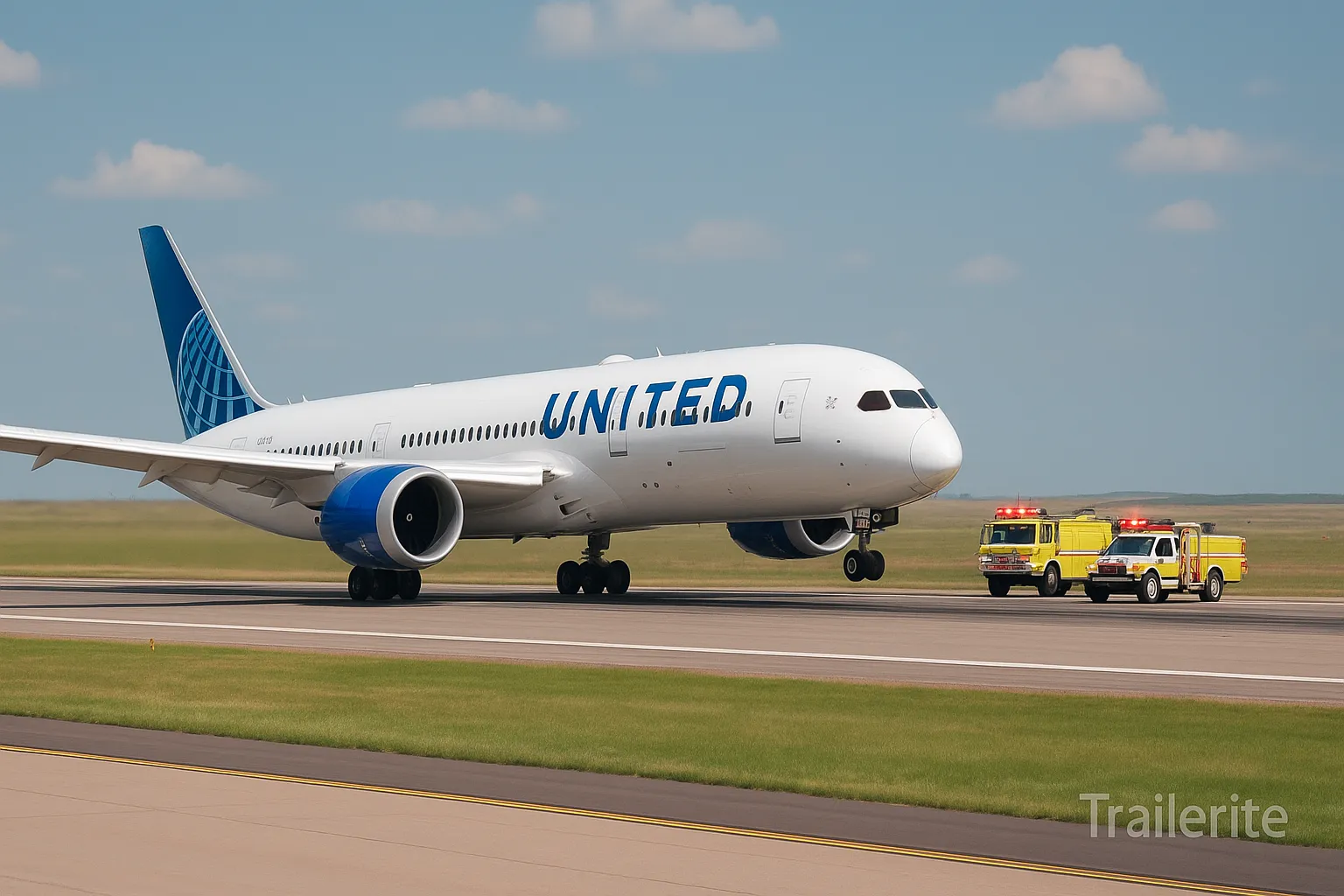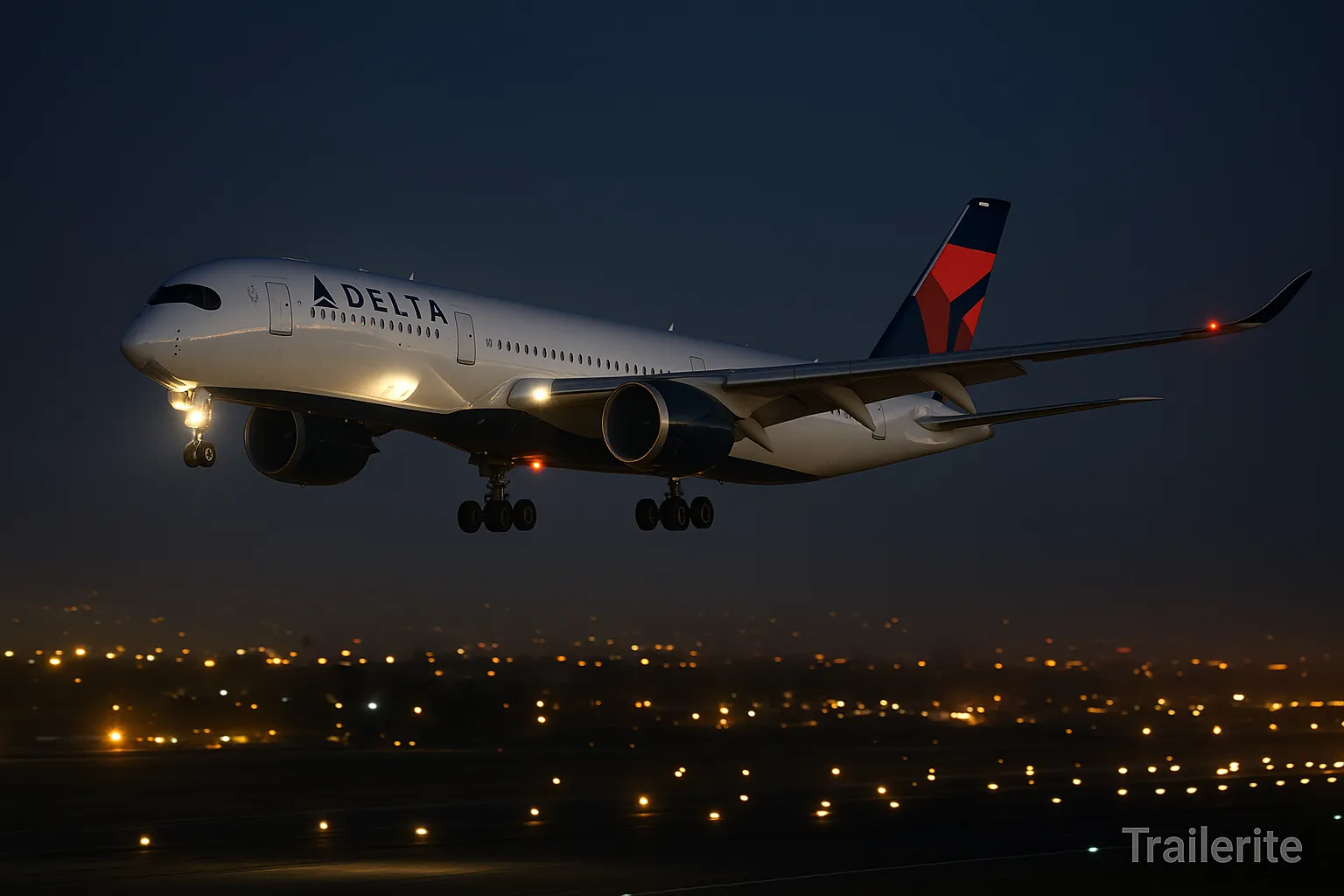Incident
In late July 2025, passengers aboard United Airlines Flight UA770 experienced a journey they would never forget. What began as a routine flight from San Francisco to Chicago turned into an unexpected emergency diversion to Denver—a move that underscored the importance of aviation safety, professionalism, and preparedness.
While the term “emergency diversion” might sound alarming, the events that unfolded on Flight UA770 demonstrate how quick thinking, solid training, and effective communication can transform potential crisis into a model of calm execution. Here’s a closer look at what happened, how the airline responded, and what travelers can learn from the United Airlines Flight UA770 emergency diversion.
The Incident: A Routine Flight Takes an Unexpected Turn
On July 28, 2025, United Airlines Flight UA770 took off from San Francisco International Airport (SFO) just after sunrise, bound for Chicago O’Hare International Airport (ORD). Everything appeared normal for the first 90 minutes until the flight crew noticed a technical warning indicating an irregularity in the hydraulic system, one of the aircraft’s most critical components.
Hydraulic systems control the flaps, landing gear, and brakes—essential functions for safe flight and landing. Although it was not confirmed as a full system failure, the captain and first officer made a precautionary decision to divert the flight to Denver International Airport (DEN), which was the nearest major airport equipped to handle such emergencies.
That single decision turned what could have become a serious issue into a textbook case of safety-first aviation culture.
Why the Diversion Was Necessary
Every commercial flight operates under strict safety protocols, and even a hint of irregularity in hydraulic pressure can’t be ignored. Aviation experts later confirmed that the crew’s quick decision to divert was the right call, as continuing to Chicago would have meant flying hundreds of miles over areas without the same emergency infrastructure.
The United Airlines Flight UA770 emergency diversion was therefore not an overreaction—but a smart, proactive step designed to ensure the safety of everyone onboard.
This is exactly how the airline industry is trained to operate: act first, analyze later. It’s not just policy—it’s a life-saving mindset.
Crew Response: Calm, Professional, and Reassuring
Passengers onboard later praised the crew for their composure and clarity during the incident. The pilot made an announcement explaining that the flight would be diverting to Denver due to a technical issue and assured passengers that everything was under control.
Flight attendants followed protocol with precision. They checked seatbelts, ensured loose items were secured, and calmly answered passenger questions. Several travelers shared online afterward that the cabin remained remarkably calm throughout the process—a reflection of excellent communication and crew training.
One passenger even wrote on X (formerly Twitter),
“Big respect to the UA770 crew. Calm, clear, and totally in control. Unexpected stop in Denver, but everyone stayed safe. Kudos to United!”
This professional handling became one of the most-discussed highlights of the United Airlines Flight UA770 emergency diversion story.
Passenger Reactions: From Fear to Relief
For most passengers, hearing the words “emergency diversion” mid-flight is bound to raise concern. Yet once the aircraft landed safely in Denver, the overwhelming emotion was relief and gratitude.
United Airlines staff on the ground quickly took over, offering meal vouchers, rebooking assistance, and clear information about connecting flights. Many travelers later commended both the cabin and ground teams for their efficiency and empathy.
Several aviation enthusiasts on social media even pointed out how well-trained flight crews make all the difference in these rare situations. The UA770 diversion ended up becoming an example of how good training and communication can prevent panic—and earn trust.
United Airlines’ Response and Follow-Up
Within hours of the incident, United Airlines released a statement confirming that the UA770 flight was diverted due to a possible hydraulic system warning and that no injuries or serious mechanical failures occurred.
The airline emphasized its commitment to operational safety and noted that the aircraft would undergo a full maintenance inspection before being cleared to fly again.
Such transparency is part of why United continues to maintain public confidence even when unexpected events arise. The company’s safety protocols and swift public communication align perfectly with modern aviation standards—and earned praise from several aviation experts and industry journalists, including coverage featured on Trailerite, where experts discussed how United’s decision reflected the airline’s dedication to safety over convenience.
Understanding Emergency Diversions in Aviation
Many passengers assume that an emergency diversion means disaster—but in reality, it’s quite the opposite. It’s a preventive measure.
A diversion can happen for multiple reasons:
- Mechanical issues (like hydraulic or engine warnings)
- Medical emergencies onboard
- Severe weather conditions ahead
- Security or passenger disruptions
In the case of United Airlines Flight UA770, the hydraulic system indicator was reason enough to act. By diverting early, the crew avoided potential escalation and ensured that maintenance teams could inspect the plane in a controlled environment.
Aviation analysts have since praised this approach, saying that “precaution is the best form of protection” in flight operations—a sentiment echoed across aviation safety boards.
FAA and Post-Incident Investigation
Following standard procedure, the Federal Aviation Administration (FAA) launched a review of the UA770 emergency diversion to determine the cause and confirm that the airline followed all safety regulations.
These investigations are not punitive—they are routine checks aimed at ensuring continuous improvement in airline safety practices.
According to early reports, no major faults were found, and the diversion was classified as a precautionary safety maneuver. This outcome reinforces how robust safety systems and quick human decisions work hand-in-hand to protect lives.
What Experts Say About the UA770 Diversion
Aviation professionals widely praised the United Airlines Flight UA770 crew for demonstrating how human expertise complements advanced aircraft technology.
Captain Sarah Donnelly, a retired commercial pilot and safety consultant, told Trailerite in a post-incident interview:
“The crew made the right decision. Even if a warning light turns out to be a false alert, it’s never worth taking chances. United Airlines handled it exactly as they should.”
Her comments mirror the broader consensus in the aviation world: modern flying remains one of the safest forms of travel precisely because of these decisive actions and well-rehearsed emergency procedures.
Lessons and Takeaways from the UA770 Emergency Diversion
Every incident in aviation carries valuable lessons, and the United Airlines Flight UA770 emergency diversion offers several key takeaways worth highlighting:
✈️ 1. Safety Must Always Come First
Even minor warnings deserve immediate attention. The UA770 crew didn’t wait for confirmation—they acted decisively.
👨✈️ 2. Crew Training Saves Lives
United’s crew training standards showed their effectiveness under real pressure. Passengers stayed calm because the crew stayed calm.
🗣️ 3. Communication Eases Fear
Transparent updates from the captain and flight attendants prevented panic and built trust during an uncertain moment.
🧭 4. Preparedness Pays Off
Airlines and airports that maintain high readiness levels, like Denver International, play a crucial role in successful emergency responses.
These insights not only reinforce passenger confidence but also remind the aviation industry that continuous learning and safety drills are vital.
Final Thoughts: A Model Example of Aviation Safety
The United Airlines Flight UA770 emergency diversion wasn’t just a story of a mid-air technical warning—it was a story of precision, professionalism, and the power of preparation.
What could have been a frightening experience turned into a masterclass in aviation crisis management, thanks to the competence of United’s crew and the support of ground operations.
As coverage from Trailerite noted, the incident highlights how airlines can turn unexpected challenges into examples of how safety systems are meant to work—protecting lives first, analyzing later, and always putting people above schedules.
In the end, Flight UA770 landed safely, passengers were cared for, and a potential crisis became a case study in effective emergency management. For travelers everywhere, it serves as reassurance that modern aviation continues to operate with safety as its unwavering priority.
Check out more interesting articles on Trailerite.com



